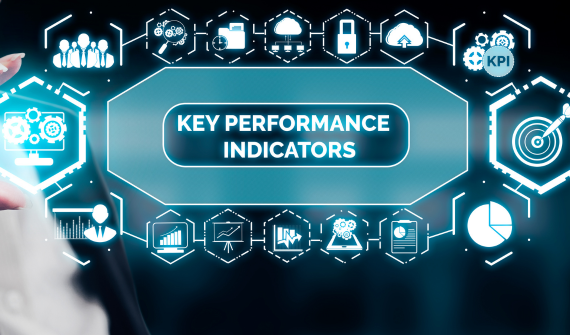Welcome to "Measuring Success: The Top Training KPIs You Should Be Tracking in 2023."
In this comprehensive guide, we will explore the key performance indicators (KPIs) that are essential for evaluating the effectiveness and impact of your training initiatives.
By tracking training KPIs, you can gain valuable insights into the success of your training programs, identify areas for improvement, and make data-driven decisions to optimize your training efforts.
Whether you are an HR professional, a training manager, or a business leader, this guide will equip you with the knowledge and tools to measure and enhance the success of your training endeavors in the dynamic year of 2023.
Let's dive in and unlock the secrets to measuring training success!
What Are KPIs?

They provide a clear and measurable way to track progress, assess success, and make data-driven decisions for improvement and strategic planning.
KPIs vary across industries and departments, focusing on areas such as revenue, customer satisfaction, productivity, efficiency, and more.
Why Are KPIs For Learning And Development Important?

KPIs (Key Performance Indicators) for learning and development play a crucial role in assessing the effectiveness and impact of training initiatives.
Here's why KPIs for learning and development are important:
1. Measurement Of Success
KPIs provide a quantifiable way to measure the success of learning and development programs.
They allow organizations to track progress, identify achievements, and determine if desired outcomes are being met.
2. Data-Driven Decision Making
This data enables informed decision-making regarding resource allocation, program improvements, and strategic planning.
3. Continuous Improvement
KPIs act as benchmarks for continuous improvement.
By monitoring and analyzing the performance indicators, organizations can identify areas that need enhancement, address gaps in training, and make necessary adjustments to maximize the impact of learning and development initiatives.
4. Alignment With Business Goals
KPIs for learning and development help align training efforts with the overall strategic goals of the organization.
By establishing relevant KPIs, organizations can ensure that training programs are designed to meet specific business objectives, resulting in a more focused and impactful learning experience.
5. Return On Investment (ROI) Evaluation
KPIs enable organizations to assess the ROI of learning and development investments.
By measuring the impact of training programs on key metrics such as employee performance, productivity, engagement, and retention, organizations can evaluate the value and effectiveness of their training initiatives.
6. Employee Engagement And Satisfaction
KPIs can also reflect the level of employee engagement and satisfaction with the learning and development programs.
Monitoring KPIs related to employee feedback and participation can help identify areas for improvement and tailor training programs to better meet employee needs and preferences.
In summary, KPIs for training are essential because they provide a means to measure success, make data-driven decisions, drive continuous improvement, align training with business goals, evaluate ROI, and enhance employee engagement.
By effectively utilizing KPIs, organizations can optimize their learning and development efforts and contribute to the overall success and growth of the company.
The Top Training KPIs You Should Be Tracking in 2023

In 2023, tracking the right Key Performance Indicators (KPIs) is crucial for assessing the effectiveness and impact of your training initiatives.
By monitoring these top training KPIs, you can gain valuable insights, measure progress, and make data-driven decisions to optimize your training efforts.
Here are the top KPIs for training you should be tracking in 2023:
1. Training Completion Rate
This KPI measures the percentage of employees who have completed the assigned training programs.
It helps evaluate the engagement and commitment of employees toward their professional development.
2. Training Effectiveness
This KPI assesses how well the training programs are achieving their intended outcomes.
It can be measured through pre and post-training assessments, feedback surveys, or performance evaluations to determine the knowledge and skills acquired by employees.
3. Employee Satisfaction With Training
This KPI measures the satisfaction level of employees regarding the training they receive.
It can be assessed through surveys or feedback mechanisms to gauge the quality, relevance, and delivery of the training programs.
4. Training Return On Investment (ROI)
This KPI measures the financial impact of training initiatives on the organization.
It calculates the ratio of training costs to the benefits derived from improved employee performance, productivity, or cost savings.
Tracking ROI helps justify training investments and allocate resources effectively.
5. Time To Competence
This KPI measures the time it takes for employees to become proficient in their roles after completing training.
It helps assess the efficiency and effectiveness of training programs in equipping employees with the required skills and knowledge within a reasonable timeframe.
6. Employee Engagement In Learning
This KPI measures the level of employee engagement and participation in learning activities.
It considers factors such as completion rates, active participation in discussions or forums, and utilization of additional learning resources.
7. Knowledge Retention
This KPI evaluates the extent to which employees retain and apply the knowledge and skills acquired from training programs.
It can be measured through post-training assessments or performance evaluations conducted at a later stage to assess the long-term impact of training.
Individualized learning contributes to improved information retention among learners.
8. Training Cost Per Employee
This KPI measures the average cost of training per employee.
It helps evaluate the efficiency of training investments and identify opportunities for cost optimization while maintaining training quality.
9. Manager Support And Involvement
This KPI assesses the level of support and involvement of managers in the training process.
It measures factors such as manager participation in training activities, feedback provided to employees, and support for implementing learned skills in the workplace.
10. Talent Development And Promotion
This KPI tracks the number of employees who have progressed within the organization or received promotions as a result of their participation in training programs.
It reflects the impact of training on career development and the organization's commitment to talent management.
By tracking these top KPIs in 2023, you can gain actionable insights into the effectiveness of your training programs, identify areas for improvement, and make informed decisions to enhance employee development and organizational success.
Enhance Your Employee Training With Oreed
Unleash the power of educational intelligence with Oreed, a groundbreaking platform that revolutionizes the way you analyze, understands, and optimize your organization's learning and development initiatives.
- Boost employee awareness and gain a comprehensive view of your workforce with Oreed.
- Make informed decisions benefiting both employees and the company.
- Optimize workforce management strategies and drive success through valuable insights.
- Facilitate customized training and courses with Oreed's tools.
- Deeply understand employees' training needs for fostering growth and success.
- Tailor training programs to ensure team members excel in their roles.
- Measure the impact and effectiveness of training initiatives using Oreed's advanced analytics.
- Gain valuable insights to continuously improve and refine training efforts.
- Optimize training programs for maximum value to employees and the organization.
- Take your business to the next level with Oreed's ROI promise.
- Experience unprecedented success with a substantial 10x increase in customer revenue and engagement.
- Empower employee productivity and improve organizational efficiency with Oreed.
So what are you waiting for? Book a demo with Oreed today and find out more about our features.
Promote lifelong learning through Oreed by experiencing the most powerful all-in-one training and development intelligent platform that streamlines all your organization's learning, training, and development activities in one place.
Final Thoughts
In 2023, tracking the right training Key Performance Indicators (KPIs) is crucial for organizations to measure the success of their training programs.
By monitoring and analyzing the top training KPIs, organizations can gain valuable insights into the effectiveness and impact of their training initiatives.
These insights enable data-driven decision-making, identification of areas for improvement, and the ability to optimize training efforts for maximum value.
By staying on top of the KPIs in 2023, organizations can drive continuous improvement, enhance employee development, and achieve their learning and development goals.
FAQs
1. How to measure training effectiveness in 2023?
In 2023, measuring training effectiveness involves utilizing a combination of qualitative and quantitative methods.
Organizations can track key training performance indicators such as training completion rates, pre and post-training assessments, employee feedback surveys, and on-the-job performance evaluations.
Additionally, leveraging advanced analytics and reporting capabilities offered by modern training management systems allows organizations to measure the impact of training on employee performance, productivity, and overall business outcomes.
By using these comprehensive measurement approaches, organizations can assess the effectiveness of their training initiatives and make data-driven decisions for continuous improvement.
2. What KPI do you track to measure success?
Organizations may track a wide range of KPIs to measure success based on their specific goals and objectives.
Some common KPIs that organizations track include financial metrics such as revenue growth and profitability, customer-related metrics like customer satisfaction and retention rates, operational metrics such as productivity and efficiency, and employee-related metrics like employee engagement and performance.
The choice of KPIs depends on the organization's industry, objectives, and the outcomes they consider essential for their success.
3. What are some effective virtual training best practices?
Here are key virtual training best practices:
- Use interactive content to engage participants.
- Provide a structured curriculum and resources.
- Encourage participant interaction and collaboration.
- Ensure reliable technology and connectivity.
- Communicate clear instructions and support.
- Incorporate assessments and feedback mechanisms.
- Offer flexibility and accommodate different learning styles.
- Create a conducive learning environment.
By following these virtual training best practices, training can be more effective and engaging for participants.





